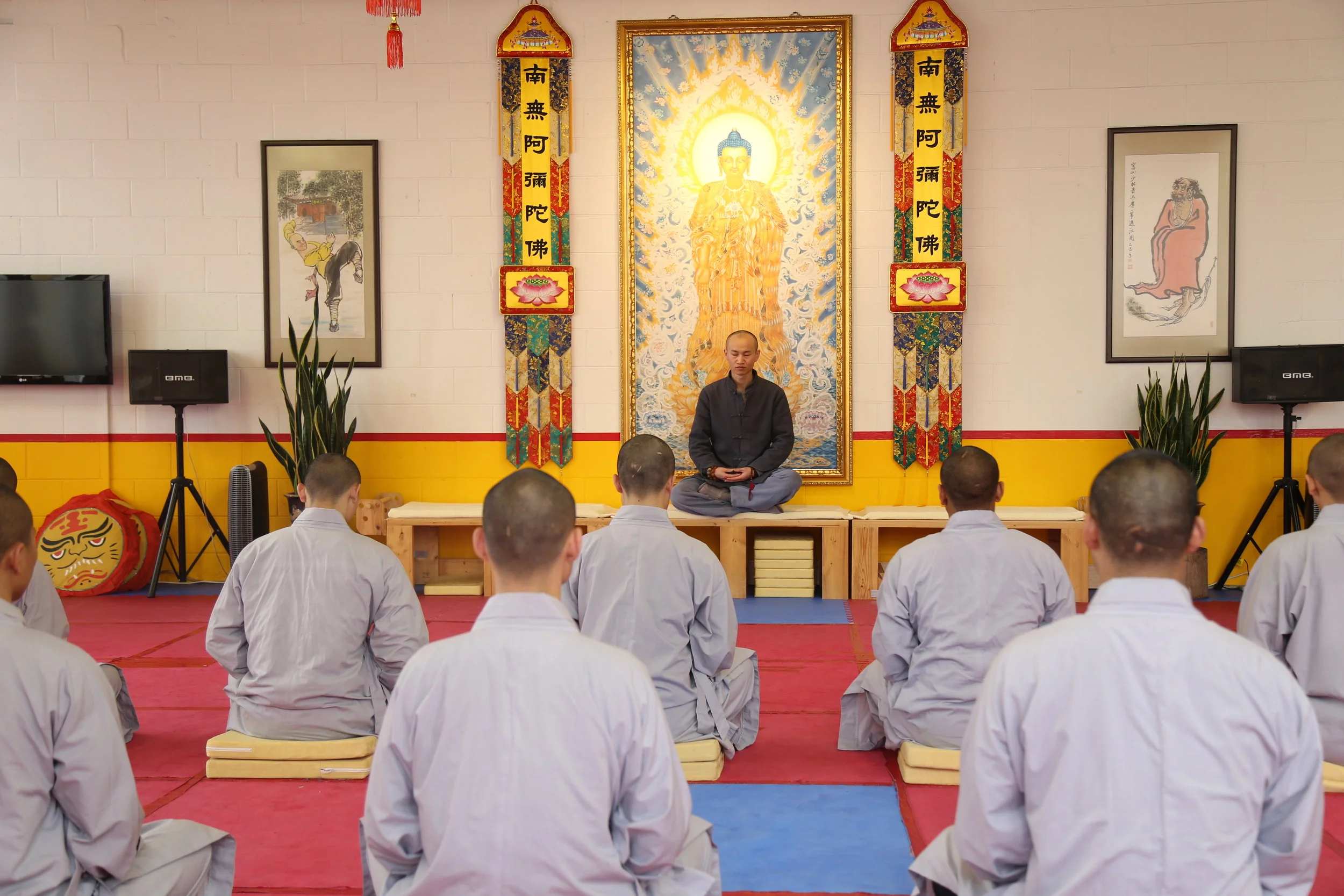Bodhidarma was the 28th patriarch of Indian Buddhism. After he settled down in Shaolin Monastery, he practised meditation in concealment in a stone cave in the vicinity of the monastery for nine years. There he sank into perennial meditation until he completed his formulation of the system of Zen tenets, which is based on dhyana. Therefore he is acclaimed as the 1st patriarch of the Zen sect. The name of his successor is Huiko, reputed as the 2nd patriarch. Huiko was succeeded by Sengcan as the 3rd patriarch. Daoxin was conferred the title of the 4th patriarch after Sengcan's death. Then Hongren became the 5th patriarch, who was succeeded by Huineng as the 6th patriarch. Brilliant talents and charismatic personalities of these six paramount leaders of the Zen set combined to open out an unrestrained development of the Zen sect in China. After the 6th patriarch, five schools diverged out of the Zen sect which was at that time the largest and most powerful Buddhist sect in China.
In the parlance of the Zen sect, "Zen" means "meditation". According to Yogacara, "meditation is such a mentality, in which one makes his cogitation focus on a point by first seeking to rid his mind of all impertinent and straying thoughts." In vernacular terms, dyana (which was later transmuted into Zen of Chinese Buddhism) may be interpreted as a system of theories, which was evolved for the purpose of inducing a dhyana devotee to concentrate his mental activities on ruminating just one topic. In the case of Zen , once a Zen devotee has developed the habit of concentrating or controlling his mind at will, a new mental faculty would be created in him. To develop such a habit, a devotee may try either of the two methods of "breath-counting concentration" and "introspective concentration". Either method is intended for enabling a devotee who practices Zen tenets to control his mental activities at will. The Zen doctrine requires a Zen devotee to become not only completely blind, deaf, and benumbed to all his surroundings but also completely placid inwardly when he is in a perfect state of meditation.Therefore practising Zen entails virtually very straining mental exertion and, if such mental exertion is valid, can create a sort of mental subtlety in a Zen practitioner.
The basic doctrines adhered to by the Shaolin school of the Zen sect are completely in line with the basic doctrines formulated by Buddha himself. The policy laid down by patriarchs in the history of the Zen sect for propagating Zen basic doctrines is unique and independent. The ultimate goal expected to be reached by a devotee of the Shaolin school is his final discovery of his svabhava through the Zen transcendental meditation regularly performed by him. Besides, the Shaolin school of the Zen sect distinguishes itself from other schools of the Zen sect in its adherence to the principle of integrating doctrinal inculcation of the Zen tenets with Shaolin Kung Fu training. So far as the monk population of Shaolin Monastery is concerned, their primary task is receiving education in Zen and practising meditation. They have a secondary task to fulfill too, which is undergoing Shaolin Kung Fu training. In order to practise meditation properly a Shaolin monk needs to regulate his mind by banishing from it all thoughts so that he can have peace of mind fit for receiving Zen inculcation and practising meditation. On the other hand he has to keep himself fit so that he can carry on his primary task of pursuing Zen tenets study and practising meditation well. For that purpose he must receive Shaolin Kung Fu training. However, in no circumstances he is allowed to make progress in Kung Fu training at the cost of his achievement in Zen tenets study or meditation. Zen is the source of life, vitality, and wisdom. At the base of the universe does rest Zen.

